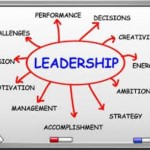 by Ian C. Woodward
by Ian C. Woodward
Leaders must cultivate the seamless ability to mix forward-vision thinking, tactical execution and self-awareness – across the altitudes of leadership.
High altitudes hold a special place in the history of human achievement. We remember Sir Edmund Hillary and Nepalese sherpa, Tenzing Norgay as the first climbers to reach the summit of Mount Everest. Other altitude pioneers include Russian cosmonaut, Yuri Gagarin, the first human to fly in outer space, and Neil Armstrong, the first person on the moon. More recently, in 2012, Austrian Felix Baumgartner skydived from a capsule at 127,000 feet.
In the world of leadership, altitudes are significant, too. However, the concern is much less about how high a leader can go, than about how he or she can seamlessly move between three distinct altitudes of leadership thinking.





 by Manfred Kets de Vries
by Manfred Kets de Vries By Ryan Davies, Hugues Lavandier, and Ken Schwartz
By Ryan Davies, Hugues Lavandier, and Ken Schwartz
 onal high of going to work and being among a group of productive associates, fellow employees with a common goal and supported by an understood incentive, moves people to act like no other force.
onal high of going to work and being among a group of productive associates, fellow employees with a common goal and supported by an understood incentive, moves people to act like no other force.